Platies are highly recommended as a great fish for the first-time hobbyist. Whether you are a beginner looking to start your own aquarium or an experienced fish enthusiast, platies make a fantastic choice.

Platies are widely available, hardy, peaceful fish that come in a great variety of color combinations. In this article, we will discuss the characteristics of platies that make them suitable for beginners, their low demands on tank setup and equipment, their feeding and breeding habits, their compatibility with other fish species, and common health issues to be aware of.
What are Platies?
Platies, scientifically known as Xiphophorus maculatus, are a species of small freshwater fish native to Central America. They are part of the Poeciliidae family, which also includes other popular aquarium fish like guppies and mollies. Platies have gained immense popularity in the aquarium trade due to their vibrant colors and ease of care.
These fish are originally found in Mexico, Guatemala, and Honduras, primarily in slow-moving rivers, streams, and marshes. In their natural habitat, platies usually exhibit a silver, blue, or orange coloration.
However, through selective breeding, a wide range of color variations and patterns have been developed, resulting in domestic platies that can be white, yellow, gold, orange, red, blue, or black.

Characteristics of Platies that make them suitable for beginners
One of the main reasons why platies are considered excellent beginner fish is their hardy and resilient nature. They can tolerate a wide range of water conditions, including fluctuating temperatures and slightly alkaline or acidic pH levels. This makes them ideal for beginners who may still be learning the intricacies of maintaining a stable aquatic environment.
In addition to their adaptability, platies are also known for their ease of care and maintenance. They are generally not demanding when it comes to feeding and can thrive on a diet of high-quality flake or pellet food.
They are not picky eaters and readily accept various types of commercial fish foods. However, it is recommended to supplement their diet with occasional treats like frozen or live foods to provide them with a well-rounded nutritional intake.
Furthermore, platies have a peaceful temperament, which makes them a great addition to community aquariums. They generally get along well with other peaceful fish species and rarely show aggressive behavior.
This peaceful nature allows beginners to experiment with different tank setups and introduce other compatible fish species without the worry of aggression or territorial conflicts.

Low demands on tank setup and equipment
Setting up a suitable environment for platies is relatively straightforward and does not require extravagant equipment. Platies can thrive in a minimum tank size of 10 gallons, although larger tanks provide more swimming space and allow for a greater number of fish.
It is important to provide a well-filtered and well-aerated tank to maintain optimal water quality. Regular water changes and keeping a close eye on ammonia, nitrite, and nitrate levels are essential for the health and well-being of platies.
Platies also appreciate ample hiding spots and plant coverage in their aquarium. Live plants such as Java ferns, Anubias, or floating plants like Amazon frogbit not only provide shelter and hiding places for the fish but also contribute to the overall aesthetics of the tank. These plants also help with water quality by absorbing nitrates and providing additional oxygen.
Feeding and diet
When it comes to feeding, platies are not fussy eaters and will readily accept a variety of commercially available fish foods. High-quality flakes or pellets specifically formulated for tropical fish are an excellent staple for their diet. These foods are designed to meet their nutritional needs and promote healthy growth and vibrant colors.
It is worth mentioning that introducing a varied diet is beneficial for the overall health of platies. Supplementing their diet with occasional treats such as frozen or live foods like brine shrimp, bloodworms, or daphnia will provide them with essential nutrients and help mimic their natural feeding behavior. A varied diet also helps enhance their colors and boosts their immune system.

For more on feeding your aquatic pets check out The Ultimate Guide to Fish Food: Pros and Cons & Best Choices!
Breeding habits and potential challenges
Platies are livebearers, which means they give birth to live and fully formed fry instead of laying eggs. This reproductive behavior makes them incredibly easy to breed, even for beginners. Female platies can store sperm, allowing them to produce multiple batches of fry from a single mating. This reproductive strategy results in a high number of offspring, which contributes to their popularity in the aquarium trade.
While breeding platies is relatively easy, there are a few considerations to keep in mind. Female platies can store sperm for several months, so it’s important to ensure a healthy male-to-female ratio to avoid stressing the females. Additionally, providing suitable hiding spots or breeding traps for pregnant females and separating them from other fish can increase the survival rate of the fry.
Compatibility with other fish species

Platy fish are highly recommended for beginners due to their hardy nature, small size, and adaptability to various tank environments. Species like the Mickey Mouse Platy are peaceful community fish, making them perfect companions for other species such as Betta fish (Siamese fighting fish).
These active fish are also suitable for tanks with schooling fish, creating a lively and harmonious environment. As hardy fish, Platies can thrive in different water conditions, which makes them ideal for novice aquarists who may not have perfect tank setups initially.
However, it’s important to ensure that tank mates are not too aggressive or territorial, as platies can be easily outcompeted for food or become the target of aggression. Additionally, avoid keeping them with larger, predatory species that may see platies as potential snacks.
Common health issues and how to prevent them
Like any other fish species, platies are susceptible to certain health issues. However, with proper care and regular observation, these issues can be minimized or prevented.
One common problem that platies can experience is Ich, a parasitic infection that manifests as white spots on their bodies.
Maintaining optimal water quality, avoiding temperature fluctuations, and quarantine procedures for introducing new fish can help prevent Ich outbreaks.
Regular monitoring of water parameters, including temperature, pH, ammonia, nitrite, and nitrate levels, is crucial to ensure a healthy environment for platies. A well-maintained and balanced tank will help prevent common ailments like fin rot, bacterial infections, and swim bladder issues.
How to Choose Beginner Fish from Local Fish Stores

When purchasing fish from local fish stores, it’s important to select species that are easy to care for, like Platies. The Mickey Mouse Platy, in particular, is a popular choice due to its vibrant colors and hardy nature. These small fish are active and adapt well to different tank conditions, making them suitable for beginners.
Local stores also offer a variety of other species, such as Betta fish and Cichlid species. While Betta fish can sometimes be solitary, with proper care, they can coexist with other peaceful community fish. Ensure your fish tank is set up correctly to support these hardy species for a successful fishkeeping experience.
Conclusion
In conclusion, platies make excellent beginner fish due to their hardy nature, adaptability to various tank conditions, and peaceful temperament.
Their vibrant colors and low demands on tank setup and equipment make them an attractive choice for both beginners and experienced fishkeepers.
With proper care and attention, platies can thrive and bring joy to any aquarium. So, if you are considering starting your own aquarium or adding new fish to an existing one, don’t hesitate to choose platies as your beginner fish!


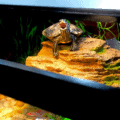


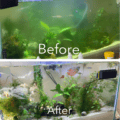

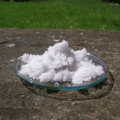
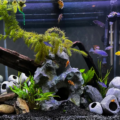

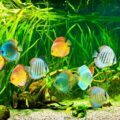
1 thought on “Are Platies Good Beginner Fish?”